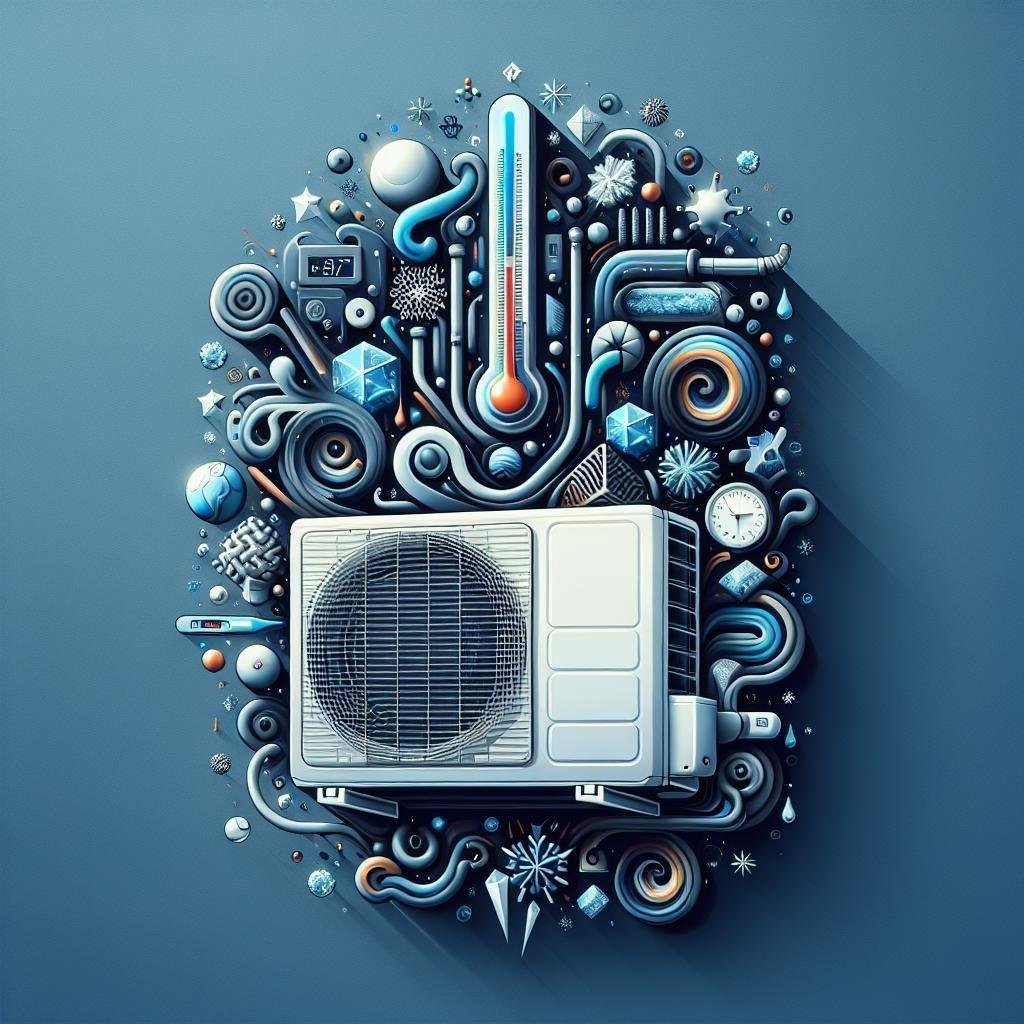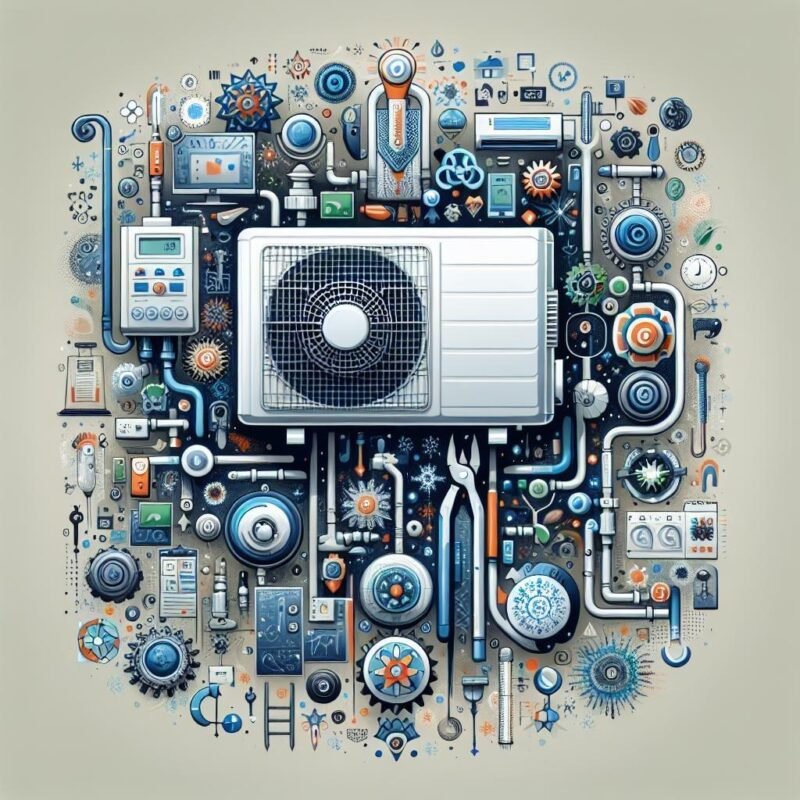ah, the mighty mini split AC – that sleek, wall-mounted wonder that’s been sparking more neighborhood debates than a fence boundary dispute! while these energy-efficient marvels have been cooling homes across the globe for decades, they’ve somehow managed to collect more myths than your grandmother’s old wives’ tales. From whispered concerns about their winter performance to raised eyebrows over installation complexities, it’s time to clear the air (pun intended) about these misunderstood cooling champions. Let’s bust open the most common mini split myths that might be keeping you from embracing the future of home comfort.
Busting the Energy Cost Myth: Why Mini Splits Actually Save You Money
While some claim these systems guzzle electricity like a thirsty camel in the desert, modern mini splits are actually energy-saving champions in disguise. Their advanced inverter technology works like a skilled orchestra conductor, precisely adjusting power consumption based on your cooling or heating needs. Instead of the old-school on/off approach of conventional systems, mini splits maintain your desired temperature with minimal energy fluctuations, leading to considerably lower utility bills.
Let’s break down the real cost impact with some eye-opening facts:
- Smart zoning capabilities reduce wasted energy by up to 30%
- Variable-speed compressors use just the right amount of power
- SEER ratings frequently enough exceed 20, compared to 14-16 for conventional units
- Monthly savings can offset initial installation costs within 2-3 years
| System Type | Annual Energy Cost | Efficiency Rating |
|---|---|---|
| Mini Split | $850 | High |
| Traditional AC | $1,200 | Moderate |
Temperature Control wars: The Truth About Mini Split Zoning and Room-by-Room Comfort
Ever noticed how your home becomes a battleground of hot and cold spots? The real magic of mini splits lies in their ability to create personalized comfort zones. Unlike traditional HVAC systems that treat your entire house as one temperature-controlled box, these smart units let everyone win the thermostat war. Each family member can customize their space without affecting others’ comfort levels, making peace possible even when Mom likes it tropical and Dad prefers arctic conditions.
The zoning capabilities go beyond basic temperature control – they’re about creating climate microcosms in your home. Here’s what makes this possible:
- Individual sensors monitor each zone’s specific conditions
- Smart algorithms adjust airflow patterns in real-time
- Separate indoor units operate independently
- Precise temperature control within 1 degree
| Room Type | Typical Temperature Variance | mini Split Variance |
|---|---|---|
| Bedroom | ±4°F | ±1°F |
| Living Room | ±3°F | ±1°F |
| Home Office | ±5°F | ±1°F |
Installation Complexity Decoded: Getting Your Mini Split Up and Running Without the Hassle
Many homeowners shy away from mini split systems, believing they require complex professional installation that rivals rocket science. The truth? While professional installation is recommended, the process isn’t as daunting as urban legends suggest. Modern mini splits come with user-pleasant mounting brackets, pre-charged line sets, and detailed manuals that make the setup more straightforward than traditional HVAC systems. The key components – indoor air handler,outdoor unit,and connecting lines – fit together like elegant building blocks.
Before jumping into installation, focus on these game-changing factors:
- Location mapping for optimal airflow
- Proper wall support assessment
- Condensate drain planning
- Electrical requirements check
| Installation Stage | DIY Difficulty | Pro Support Needed? |
|---|---|---|
| Indoor Unit Mount | Easy | Optional |
| Line Set Connection | Moderate | Recommended |
| Electrical Hookup | Complex | Required |
Noisy Units and Outdoor Eyesores: Why Modern Mini Splits Are Actually Quiet and Sleek
Gone are the days of clunky window units rattling through the night and massive condensers cluttering up your garden. Today’s mini split systems have undergone a remarkable transformation, featuring whisper-quiet operation that rivals the gentle hum of your refrigerator. Indoor units operate at sound levels as low as 19 decibels – quieter than falling leaves or a soft whisper. Advanced fan blade designs,sound-dampening technology,and precision engineering work together to ensure your comfort without the noise pollution.
The exterior components have also evolved into sleek, compact designs that complement modern architecture. Many manufacturers now offer:
- Slim-profile outdoor units that mount flush to walls
- Custom color options to match your home’s exterior
- Decorative covers and concealment solutions
- Low-profile indoor units that double as artwork
| Unit Type | Sound Level (dB) | Size Reduction |
|---|---|---|
| Modern Mini Split | 19-30 dB | 40% smaller |
| Traditional AC | 50-70 dB | Standard size |
Q&A
Q: What is a mini split AC, and why is it so popular?
A: Great question! A mini split AC is a very efficient heating and cooling system that consists of two main components: an indoor unit that sits in your living space and an outdoor unit that does the heavy lifting outside. Its growing popularity is mainly due to its energy efficiency, flexibility, and ease of installation. Plus, it gives you more control over the temperature in individual rooms.
Q: I’ve heard that mini split systems are too expensive to install. Is that true?
A: Ah, the cost myth! While the upfront investment can be higher than traditional systems, many homeowners forget to factor in the long-term savings. Mini splits are highly energy-efficient, so you could see lower utility bills over time. plus, installation can be a breeze, especially in homes without existing ductwork. Think of it as a wise investment for comfort and savings!
Q: Are mini split ACs only for small spaces?
A: Not at all! This myth might stem from the word “mini” in their name, but mini splits can efficiently cool or heat large spaces too. whether you live in a cozy apartment or a sprawling home, ther’s a mini split solution that can work for you. they come in various sizes and capacities, so there’s likely a perfect fit for your home.
Q: Do mini splits require a lot of maintenance?
A: Many folks think they’re high-maintenance, but the truth is, mini splits are quite low-maintenance! Regular cleaning of the filters (which you can often do yourself) and periodic professional maintenance can keep your system running smoothly for years. It’s just like caring for your car; a little upkeep goes a long way!
Q: Is it true that mini splits are noisy?
A: Noise is frequently enough a concern, but the reality is mini splits are designed to be quieter than traditional air conditioning units. The indoor units operate at whisper-soft levels, so you can enjoy a cool breeze without that distracting hum.Many people appreciate how they can have a peaceful habitat while staying cozy!
Q: I’ve heard that mini split systems are not efficient in really cold weather. Is that true?
A: This is one of the most common myths! While it’s true that older models of mini splits struggled in extreme cold, modern technology has come a long way.Many new models are designed specifically to operate efficiently even in frigid temperatures. So whether it’s a hot summer day or a chilly winter night, mini splits have got you covered!
Q: Can I install a mini split system myself to save money?
A: While DIY projects can be rewarding, it’s best to leave the installation of mini splits to the pros. Proper installation ensures that the system operates at peak efficiency and can also help maintain your warranty. It might mean spending a little more upfront, but think of it as hiring a craftsman to build your cooling castle!
Q: Do mini split systems use a lot of electricity?
A: Not at all! In fact, one of the biggest benefits of mini split systems is their energy efficiency. they frequently enough use less electricity compared to traditional systems, thanks to advanced technology like inverter-driven compressors. So, you can keep your home cool without breaking the bank on your energy bill.
Q: Can mini splits work with my existing heating system?
A: Absolutely! Many homeowners opt for a mini split system to complement their existing heating solutions, providing extra warmth or cooling where they need it most. They can be a great addition to bolster comfort in hard-to-heat or cool areas of your home. It’s all about working smarter, not harder!
mini splits can be amazing allies in your quest for comfort, and by debunking these myths, you can make informed choices for your home! What myth would you like to tackle next?
The Conclusion
As we wrap up our journey through the world of mini split AC myths, it’s clear that separating fact from fiction can pave the way for a more comfortable, energy-efficient home. Remember, not every whisper about these cooling champions is worth your ear—whether it’s the myth of installation being an impractical feat or the notion that they’re just glorified window units, we hope you’ve now got the lowdown to make informed choices.
The next time you hear a mini split AC rumor, take a breath, smile, and know that you’re equipped with the truth. Embrace the refreshing coolness of your space with confidence, leaving those misconceptions behind. Here’s to enjoying the perfect temperature—without the myths weighing you down! Happy cooling!























